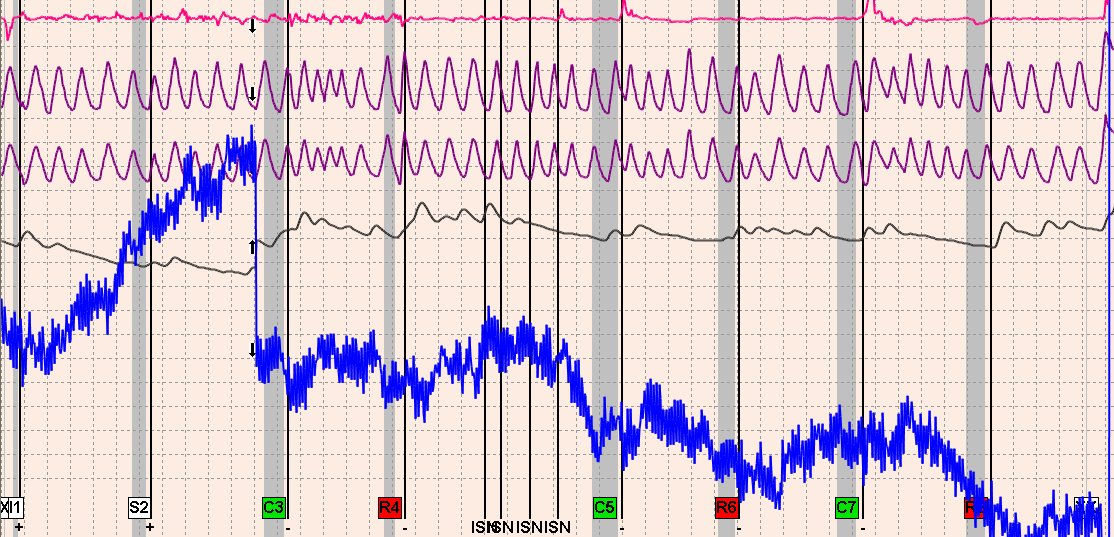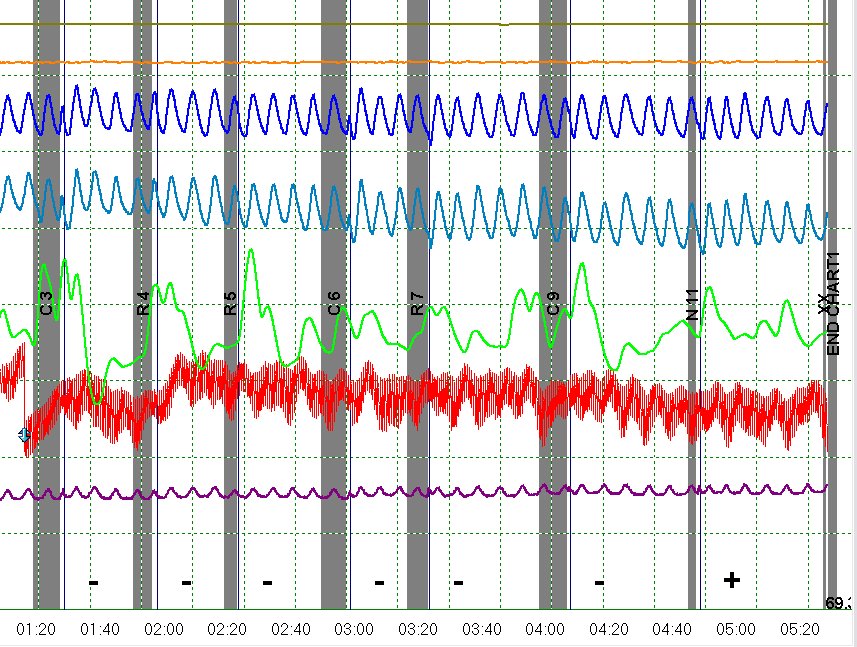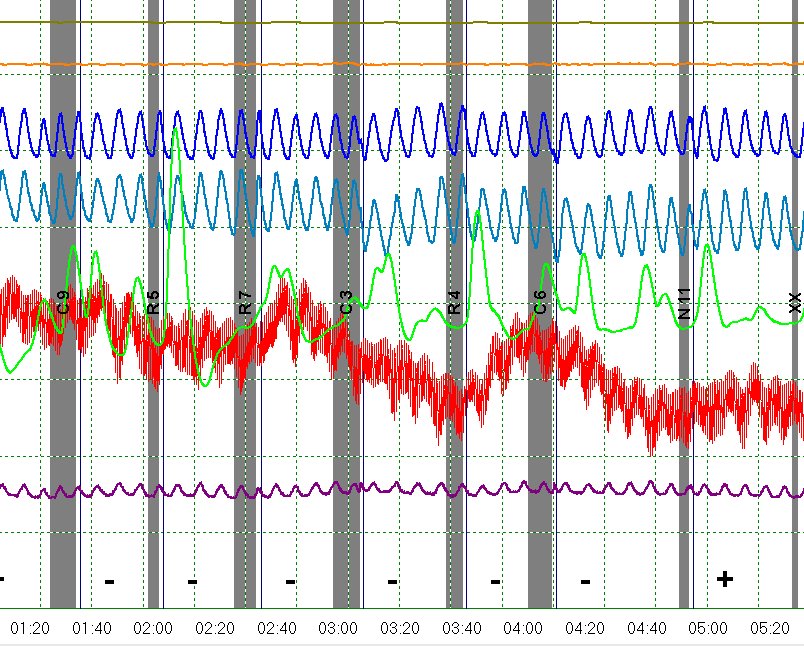|
Author
|
Topic: An interesting test - with a teaser of Lafayette's OSS-3 algorithm
|
rnelson
Member
|
 posted 02-05-2008 11:50 AM
posted 02-05-2008 11:50 AM
  
 



Here is the result from Lafayette's beta version of OSS-3. 


r ------------------
"Gentlemen, you can't fight in here. This is the war room."
--(Stanley Kubrick/Peter Sellers - Dr. Strangelove, 1964)
[This message has been edited by rnelson (edited 02-05-2008).] IP: Logged |
blalock
Member
|
 posted 02-05-2008 01:59 PM
posted 02-05-2008 01:59 PM
  
It will be nice to get the OSS 3 from Lafayette. I like that report!------------------
Ben blalockben@hotmail.com IP: Logged |
Buster
Member
|
 posted 02-05-2008 02:08 PM
posted 02-05-2008 02:08 PM
  
2 Questions, Nelson.Are the numbers in the report for P1/P2 line length? I pretty sure its a PCSOT, but what type of zone is it? Tks IP: Logged |
rnelson
Member
|
 posted 02-05-2008 02:32 PM
posted 02-05-2008 02:32 PM
  
Ben,The report is actually nicer than this, but the colors don't go to the image printer. The report will also get better with the next beta. No CQs and only one presentation of the RQs. Pneumo data is RLL. Lafayette software engineers have confirmed that they measure only the absolute difference in y-axis data for RLL, with no x-axis calculation. This is more likely than not a convenient short-cut at the time they made the Lafayette OSS-2 tool, because they at first were telling me about calculating the hypotenuse (which includes x-axis data), and then when I told them that was unneccessary then said they never did it. The real lesson here is that our engineers will tend to tell you what they think you'll understand and what they think you want to hear. We have to train them and insist they give us the straight poop and not some BS marketing hype. Anyway, RLL based on absolute differences in y-axis is better and its consistent with Kircher and Raskin (2002) in Kleiner. Its also what CPS does. So, it will never be exactly the same as the RLL you get by hand, but its actually better (and simpler). ----------------- Its not my exam, but I tested the guy later. Its a PCSOT maintenance exam. Doesn't look too bad to me. Technique appears to be USAF or USSS MGQT with 3 RQs and 3 QCs. r ------------------
"Gentlemen, you can't fight in here. This is the war room."
--(Stanley Kubrick/Peter Sellers - Dr. Strangelove, 1964)
[This message has been edited by rnelson (edited 02-05-2008).] IP: Logged |
rnelson
Member
|
 posted 02-05-2008 02:35 PM
posted 02-05-2008 02:35 PM
  
Same examinee - one month later.




r
------------------
"Gentlemen, you can't fight in here. This is the war room."
--(Stanley Kubrick/Peter Sellers - Dr. Strangelove, 1964) [This message has been edited by rnelson (edited 02-05-2008).] IP: Logged |
Taylor
Member
|
 posted 02-05-2008 02:45 PM
posted 02-05-2008 02:45 PM
  
Ray your last post wouldn't appear on my computer until I started to post this comment and the screen is to small to see the entire exam. On the first test, it appears the report stated NSR. I think R8 has significant response and would be worried about the contact with minors. TaylorIP: Logged |
Taylor
Member
|
 posted 02-05-2008 02:47 PM
posted 02-05-2008 02:47 PM
  
LOL now my computer brought up your second test. Did you ring his neck after the DW CM's?IP: Logged |
rnelson
Member
|
 posted 02-05-2008 02:49 PM
posted 02-05-2008 02:49 PM
  
Taylor,These are not my tests, but the examiner provided them to me, and the examinee authorized their release to me. I have not scored the first one. I did a third test on him.
r
------------------
"Gentlemen, you can't fight in here. This is the war room."
--(Stanley Kubrick/Peter Sellers - Dr. Strangelove, 1964)
IP: Logged |
rnelson
Member
|
 posted 02-05-2008 02:57 PM
posted 02-05-2008 02:57 PM
  
Taylor,For the first exam my scores are +10, +7 and +5 for five charts. R8 does look bad on the first chart. I scored left or right, quick and dirty (no measuring = visual only), using 3 position only. r ------------------
"Gentlemen, you can't fight in here. This is the war room."
--(Stanley Kubrick/Peter Sellers - Dr. Strangelove, 1964)
IP: Logged |
Taylor
Member
|
 posted 02-05-2008 03:29 PM
posted 02-05-2008 03:29 PM
  
With a quick 3 pt I get a +7, +4 & +3 but a -3 spot socre on R8/first chart. Plus I would have been suspicious of the charts without the second set because of the movement sensor reactions and the saddles (plus the vegas roll). Most movement is on the CQ's or right before they are asked. Also some late responses???? The first set is kind of GM cm's as they change with each chart. Do we know why 5 charts were run? Also, even though I have a +4 on R6 my scores are suspicious as they are not consistent.BTW, I have a set of charts I will try to load up and send to you via email later today for everyones opinion. IP: Logged |
rnelson
Member
|
 posted 02-05-2008 04:29 PM
posted 02-05-2008 04:29 PM
  
Taylor,I've got -2 on R8 for chart 1, but that means nothing without the other data. Saddles - go on horses and motorcycles. The respiratory blood pressure fluctuation (no physiologist or doctor would recognize the term vagus roll) is involuntary and tell us nothing of value. I don't score late reactions. Their meaning is unreliable. I think it would be tough to argue the answering movement distortion on chart 2 as meaningful because the occur at all RQs and CQs. The first exam was a maintenance test. The second was an instant offense polygraph. I'm not convinced about CMs on the first chart, but I'm certainly open to learn. The second set is clear. I conducted a third exam, at which time he admitted to a lot of knowledge about CQs, doing complex math in his head at CQs, squeezing his buttocks, tightening his abdominals (obvious in the pneumos), and regulating his breathing at CQs. Any guesses about how the third exam went? r ------------------
"Gentlemen, you can't fight in here. This is the war room."
--(Stanley Kubrick/Peter Sellers - Dr. Strangelove, 1964)
IP: Logged |
rnelson
Member
|
 posted 02-05-2008 04:31 PM
posted 02-05-2008 04:31 PM
  
Third test.chart 1 
Chart 2 
Chart 3 
r ------------------
"Gentlemen, you can't fight in here. This is the war room."
--(Stanley Kubrick/Peter Sellers - Dr. Strangelove, 1964)
IP: Logged |
Buster
Member
|
 posted 02-05-2008 05:35 PM
posted 02-05-2008 05:35 PM
  
Thats some clean/nice charts. The first two tests had ugly EDA's. If there is CM's in the third charts, I need to be edcated because they look pretty good to me. The only thing I see is some nice reactions to the C's. There is definitely some reactions to the relevants, but I didn't compare them to the Comparison's yet. [This message has been edited by Buster (edited 02-05-2008).] IP: Logged |
Taylor
Member
|
 posted 02-05-2008 06:48 PM
posted 02-05-2008 06:48 PM
  
Still looks like he is controlling his breathing. I haven't scored it out but there are very strong reactions to the RQ's and unofficially looks DI to me.Vegus roll (yes I spelled it wrong - headache thing going on right now): I know the examinee doesn't control that. Either their arm is too close to their body or they have a bit of excess weight on them. Saddles do belong on motorcyles (don't ride horses unless they are iron but would if given the chance) However, the old AS will cause what I call Saddles..... Tell me again, the Purple bottom line - PLE?
What are the green and yellow/orange that are flat lined on top? IP: Logged |
rnelson
Member
|
 posted 02-05-2008 06:53 PM
posted 02-05-2008 06:53 PM
  
He's DI regarding forcing the victim.Bottom tracing is activity. The two at the top are RAW EDA, and Piezzo activity. I don't use them, but the system won't record the data unless they are displayed. My preference would be to always record RAW EDA, regardless of display. I keep them turned down, they are not really flat lining. I don't remember the #s but I have him DI at R5. - more later. Email me any charts.
r
------------------
"Gentlemen, you can't fight in here. This is the war room."
--(Stanley Kubrick/Peter Sellers - Dr. Strangelove, 1964)
IP: Logged |
rnelson
Member
|
 posted 02-05-2008 08:34 PM
posted 02-05-2008 08:34 PM
  
Here is an updated report of for Lafayette's OSS-3 (now, beta 2).

Simpler content, but more useable. If they mark artifacted data on the report, then this begins to inform a knowledgeable reader about issues to look for in the charts, if a more complete QC is desired. Here is the same exam (the first one above), scored with the OSS-3 laboratory tool. 
Mathematical transformations are identical. r
------------------
"Gentlemen, you can't fight in here. This is the war room."
--(Stanley Kubrick/Peter Sellers - Dr. Strangelove, 1964)
[This message has been edited by rnelson (edited 02-05-2008).] IP: Logged |
Taylor
Member
|
 posted 02-05-2008 08:44 PM
posted 02-05-2008 08:44 PM
  
I just scored it out as 0, -3, 0 and again the breathing is suspicious. The activity tracing doesn't show much but there are slight diffeences on the CQ's.I just saw your OOS report NSR ...just another reason why I don't believe we should rely completely on computerized scoring. They are great to help evaluate but examiners NEED to score out their charts. IP: Logged |
Taylor
Member
|
 posted 02-05-2008 09:10 PM
posted 02-05-2008 09:10 PM
  
Ray, I emailed you some charts. Let me know if you have a problem opening them. TaylorIP: Logged |
rnelson
Member
|
 posted 02-05-2008 09:22 PM
posted 02-05-2008 09:22 PM
  
Donna,The OSS-3 reports are all on the first exam from November. Here is the OSS-3 result from the recent test. Its DI. I put too many exams in one thread. Sorry. 
r
------------------
"Gentlemen, you can't fight in here. This is the war room."
--(Stanley Kubrick/Peter Sellers - Dr. Strangelove, 1964)
IP: Logged |
sackett
Moderator
|
 posted 02-05-2008 11:35 PM
posted 02-05-2008 11:35 PM
  
Ray,what type of test formulation was used? I'm sure I haven't seen them all, but that appears to be a ZCT without the second SYM Q.? If not a valid format, your friend should be informed. Yes, the first test looks clear, the second obviously PNC due to CM's but the third? What's with the questions identificaiton? Also, can anyone tell me why OSS uses inappropriate terminology for it's findings, i.e. SR/NSR on an apparent zone comparison tets? Jim IP: Logged |
rnelson
Member
|
 posted 02-06-2008 08:59 AM
posted 02-06-2008 08:59 AM
  
Jim,The third test is not a single issue Zone; its a multi-facet exam, an MGQT. I cropped off the first part of each chart because it has the subjects ID. I didn't want to strip the name, because that is permanent on the Limestone system. OSS uses SR/NSR for all exams. Its equivalent to DI/NDI, so their should be no real confusion. I know it doesn't give the same dramatic bang as a flashing red screen with gigantic letters that say DECEPTIVE. Because the terms have the same mathematical/physiological/psychological/epistemological meant, words like appropriate or inappropriate are value judgments that require argument that goes beyond some version of "the grand-poo-bah said so." So the questions are: 1) what makes is inappropriate, and 2) for what reasons might it be appropriate? My answers: It is well understood that the validity of polygraph test results is in part a feature of proper test questions formulation/target selection, and a proper pretest interview. Computer scoring algorithm cannot verify those details, though they can quickly and reliably perform complex math like calculating the significance of difference in responses to RQ and responses to CQs. All the computer is capable of telling us is whether the numbers indicate the presence of a significant reaction. It is an inductive leap to determine that observed reactions mean exactly and nothing else but that the examinee was deceptive. That inductive leap must be supported by the proven construct validity of a continuity of all physiological and psychologic mechanisms from the brain to the fingertips. I'm not at all sure we have established or articulated such construct validity. There is still a lot we don't know about what else, besides being deceptive, might cause reactions to polygraph test questions. It is the examer's job to conduct the examination in a manner for which it is unlikely that anything other than being deceptive would cause reactions. We cannot reasonably make the claim we do that, until we either demonstrate that nothing other than deception could have caused reaction (unlikely), or study and gain a better understanding of what else besides deception could cause a reaction and what strategies reduce or mitigate the influence of those phenomena. Now couple that with the ethical principle that tests don't make "decisions" they give "information" in the form of "results." Decisions are made by thoughtful and competent professionals, not by computers and not by tests. That there are reactions is unequivocal. That those reactions are significantly greater to RQs or CQs can be mathematically justified. SR/NSR has the same empirical meaning as DI/NDI, but doesn't rest on unsupported constructs, and doesn't allow the computer scoring algorithm to proceed make a decision that must remain the responsibility of the professional. As always, your mileage may vary.
r
------------------
"Gentlemen, you can't fight in here. This is the war room."
--(Stanley Kubrick/Peter Sellers - Dr. Strangelove, 1964)
IP: Logged |
sackett
Moderator
|
 posted 02-06-2008 11:33 AM
posted 02-06-2008 11:33 AM
  
Ray,I have never used OSS, nor do I use any algorythm for anything more than a "prop." As to my posting, I was curious as to the terminology since there has been a recent effort within most of our profession to standardize our language and apply certain terms to certain tests formats, etc. Simply "equating" one term to another is what caused us some of the problems in the past. Thanks for the input, Jim IP: Logged | |


 Polygraph Place Bulletin Board
Polygraph Place Bulletin Board

 Professional Issues - Private Forum for Examiners ONLY
Professional Issues - Private Forum for Examiners ONLY

 An interesting test - with a teaser of Lafayette's OSS-3 algorithm
An interesting test - with a teaser of Lafayette's OSS-3 algorithm
























